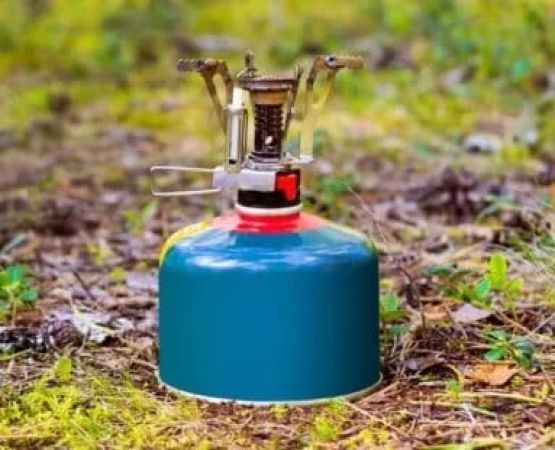How to Handle Common Campsite Issues: Bears, Water, and More
- Dealing with Bears: What to Do When You Spot One
- Managing Water Sources in the Wild
- What to Do When You Lose Your Camping Gear
- Handling Insects and Other Wildlife at Your Campsite
- Ensuring Your Safety During Bad Weather
- Experience Safe and Comfortable Camping at Pine Cliff Resort
1. Dealing with Bears: What to Do When You Spot One
One of the most alarming campsite issues is encountering a bear. While it’s a rare occurrence, it’s important to know how to handle the situation to avoid dangerous outcomes. If you come across a bear at your campsite, remember the following steps:
1.1. Stay Calm and Do Not Approach
The first rule is to stay calm. Bears are usually not aggressive unless provoked. Never approach the bear or attempt to feed it. Make your presence known by speaking in a calm, firm voice and slowly backing away.
1.2. Keep Your Food Secure
One of the biggest attractants for bears is food. Always store food in bear-resistant containers and never leave food out in the open. This will significantly reduce the risk of bear encounters. Many campsites provide bear lockers or hanging poles to help with this.
1.3. Know Bear Safety Protocols
Before camping in bear-prone areas, familiarize yourself with the park’s bear safety protocols. Some areas require you to carry bear spray or even take special precautions when cooking. It’s always better to be over-prepared than to find yourself in an unexpected situation.
2. Managing Water Sources in the Wild
Water is an essential part of any camping trip, but finding safe, potable water in the wild can be a challenge. Here's how to manage water sources when camping:
2.1. Always Purify Water
Whether you’re at a campsite with a water source or need to source water from a nearby stream or lake, always purify it. Boiling, water filters, or water purification tablets can help eliminate harmful bacteria, parasites, and viruses that may be present in natural water sources.
2.2. Carry Water with You
If you're in a remote location or can't find a reliable water source nearby, make sure to bring enough water for your entire trip. It's recommended to carry at least two liters of water per person per day.
2.3. Be Mindful of Water Conservation
When camping, always be mindful of your water usage. Use water sparingly when washing dishes or brushing teeth, and if you’re near a water source, don’t pollute it with soap or other chemicals.
3. What to Do When You Lose Your Camping Gear
It’s not uncommon to misplace or lose camping gear during your trip, and this can quickly become a stressor. Here's how to manage if you lose something vital:
3.1. Stay Organized and Check Your Gear Often
Before heading out, make a checklist of all your gear, and check it before leaving the campsite. If something is misplaced, retrace your steps to see if it can be found.
3.2. Be Resourceful with What You Have
If you've lost something, like a tent pole or a cooking utensil, try to think of creative solutions. For example, if your tent pole breaks, you can sometimes fashion a temporary fix using nearby branches. Always carry a small repair kit with duct tape and other basic tools for emergency fixes.
3.3. Plan for the Worst-Case Scenario
If you're missing crucial gear like a stove or sleeping bag, it's important to have backup plans. Carry an extra tarp, an emergency sleeping bag, or a small portable stove that could help if things go awry.
4. Handling Insects and Other Wildlife at Your Campsite
Campsites often attract insects and other small wildlife. From mosquitoes to raccoons, here’s how to handle common nuisances:
4.1. Use Bug Repellent
Insects like mosquitoes and ticks can be more than just annoying—they can carry diseases. Apply bug repellent with DEET, wear long sleeves, and avoid camping near stagnant water where mosquitoes breed.
4.2. Secure Food from Raccoons and Other Animals
Raccoons, squirrels, and other wildlife are attracted to food. Store all food in airtight containers and ensure that cooking utensils are cleaned thoroughly to avoid attracting animals.
4.3. Set Up a Campfire
Not only does a campfire provide warmth and light, but it also helps keep insects at bay. The smoke from a fire can act as a natural insect repellent, making it an essential part of your campsite setup.
5. Ensuring Your Safety During Bad Weather
Weather can be unpredictable, and bad weather can sometimes be a campsite issue that requires immediate attention. Here's how to stay safe:
5.1. Check the Weather Before You Go
Before heading out, check the weather forecast for the area you plan to camp in. This will help you prepare for any sudden weather changes, such as thunderstorms or high winds, and take the necessary precautions.
5.2. Have Shelter Ready
If you’re caught in a storm, having a waterproof tent and a proper shelter is crucial. Make sure your tent is securely staked down and that there are no leaks. It's also advisable to have extra tarps to cover your gear in case of rain.
5.3. Stay Away from Water Sources During Storms
Never camp too close to rivers, lakes, or streams. Heavy rain can quickly cause flash floods, and you’ll want to avoid being near any water sources during storms.
6. Experience Safe and Comfortable Camping at Pine Cliff Resort
For those who want to avoid common campsite issues and enjoy a more comfortable and worry-free camping experience, Pine Cliff Resort offers the ideal solution. Nestled in a beautiful natural setting, Pine Cliff Resort provides well-maintained sites, luxurious cabins, and expert-guided activities to ensure a hassle-free getaway.
Interested in a safe, enjoyable camping experience? Click here to book your next stay at Pine Cliff Resort and explore the great outdoors without the stress!






